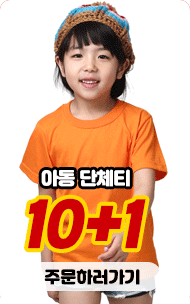A new Mannequin For DALL-E 2
페이지 정보

본문
Introduction:
DALL·E, developed by OpenAI, is an Artificial Intelligence (AI) model that showcases remarkable proficiency in generating computer-generated images from textual descriptions. Using a dataset consisting of various image-text pairs, DALL·E has been trained to generate highly realistic images that correspond to written prompts. With its aptitude for understanding and translating textual context into visual representations, DALL·E has sparked excitement and raised intriguing possibilities for the future of AI-driven creativity.
Description and Working Mechanism:
DALL·E combines recent advancements in neural network architectures and training techniques to achieve its impressive image generation capabilities. This multimodal model is based on OpenAI's popular GPT-3 language model and is trained using a two-step process. First, a subset of images and corresponding textual descriptions from the internet is used to pretrain DALL·E. Then, a combination of Reinforcement Learning from Human Feedback (RLHF) and self-play methods fine-tune the model.
 Given a textual description, DALL·E generates an image by breaking down the prompt and understanding the relationships between the objects, actions, and concepts mentioned in the text. The model then applies its learned image generation techniques to recreate the described scene. It can handle complex instructions, incorporating multiple objects, backgrounds, and lighting conditions into its resulting images.
Given a textual description, DALL·E generates an image by breaking down the prompt and understanding the relationships between the objects, actions, and concepts mentioned in the text. The model then applies its learned image generation techniques to recreate the described scene. It can handle complex instructions, incorporating multiple objects, backgrounds, and lighting conditions into its resulting images.
Capabilities and Creative Potential:
DALL·E's ability to generate highly detailed and coherent images from textual descriptions is astounding. It can visualize completely novel objects that have never been encountered during training. For example, given a prompt like "an armchair in the shape of an avocado," DALL·E is capable of producing an image that accurately represents the envisioned concept.
The model can also combine concepts to create surreal and imaginative images, such as a "giraffe made of living coral." Moreover, DALL·E can generate variations of an image based on slight modifications to the text prompts, demonstrating its capability for Text2image creative expansion. This versatility has generated notable buzz and piqued the interest of artists, designers, and various creative professionals.
Ethical Considerations:
Although DALL·E offers exciting possibilities, ethical concerns accompany its development. OpenAI acknowledges the potential for misuse, highlighting the importance of responsible AI deployment. The generated images can be used for malicious purposes, such as generating deepfake content or malicious propaganda. It is paramount to address these concerns and establish safeguards to prevent any harmful implications stemming from the misuse of DALL·E's capabilities.
Future Implications and Limitations:
DALL·E represents a significant milestone in AI-driven creativity by bridging the gap between language understanding and image synthesis. This breakthrough sets the stage for further exploration and advancements in the field. Future iterations could focus on refining the generated images' realism, resolving artifacts, and providing more fine-grained control over the generated output.
Despite its remarkable achievements, DALL·E is not without limitations. Generating high-resolution images can be computationally demanding and time-consuming. Additionally, the model sometimes produces images that lack certain semantic details highlighted in the textual prompt, indicating room for improvement in the understanding and translation of complex instructions.
Conclusion:
DALL·E is an extraordinary AI model that showcases the immense potential AI has for creativity and innovation. With its ability to generate highly realistic images based on textual descriptions, DALL·E is pushing the boundaries of artificial creativity. However, ethical considerations and technical limitations need to be addressed for responsible and beneficial deployment. As AI models continue to evolve, DALL·E sets a promising example of how AI can assist and augment human creativity in various industries and domains.
DALL·E, developed by OpenAI, is an Artificial Intelligence (AI) model that showcases remarkable proficiency in generating computer-generated images from textual descriptions. Using a dataset consisting of various image-text pairs, DALL·E has been trained to generate highly realistic images that correspond to written prompts. With its aptitude for understanding and translating textual context into visual representations, DALL·E has sparked excitement and raised intriguing possibilities for the future of AI-driven creativity.
Description and Working Mechanism:
DALL·E combines recent advancements in neural network architectures and training techniques to achieve its impressive image generation capabilities. This multimodal model is based on OpenAI's popular GPT-3 language model and is trained using a two-step process. First, a subset of images and corresponding textual descriptions from the internet is used to pretrain DALL·E. Then, a combination of Reinforcement Learning from Human Feedback (RLHF) and self-play methods fine-tune the model.
 Given a textual description, DALL·E generates an image by breaking down the prompt and understanding the relationships between the objects, actions, and concepts mentioned in the text. The model then applies its learned image generation techniques to recreate the described scene. It can handle complex instructions, incorporating multiple objects, backgrounds, and lighting conditions into its resulting images.
Given a textual description, DALL·E generates an image by breaking down the prompt and understanding the relationships between the objects, actions, and concepts mentioned in the text. The model then applies its learned image generation techniques to recreate the described scene. It can handle complex instructions, incorporating multiple objects, backgrounds, and lighting conditions into its resulting images.Capabilities and Creative Potential:
DALL·E's ability to generate highly detailed and coherent images from textual descriptions is astounding. It can visualize completely novel objects that have never been encountered during training. For example, given a prompt like "an armchair in the shape of an avocado," DALL·E is capable of producing an image that accurately represents the envisioned concept.
The model can also combine concepts to create surreal and imaginative images, such as a "giraffe made of living coral." Moreover, DALL·E can generate variations of an image based on slight modifications to the text prompts, demonstrating its capability for Text2image creative expansion. This versatility has generated notable buzz and piqued the interest of artists, designers, and various creative professionals.
Ethical Considerations:
Although DALL·E offers exciting possibilities, ethical concerns accompany its development. OpenAI acknowledges the potential for misuse, highlighting the importance of responsible AI deployment. The generated images can be used for malicious purposes, such as generating deepfake content or malicious propaganda. It is paramount to address these concerns and establish safeguards to prevent any harmful implications stemming from the misuse of DALL·E's capabilities.
Future Implications and Limitations:
DALL·E represents a significant milestone in AI-driven creativity by bridging the gap between language understanding and image synthesis. This breakthrough sets the stage for further exploration and advancements in the field. Future iterations could focus on refining the generated images' realism, resolving artifacts, and providing more fine-grained control over the generated output.
Despite its remarkable achievements, DALL·E is not without limitations. Generating high-resolution images can be computationally demanding and time-consuming. Additionally, the model sometimes produces images that lack certain semantic details highlighted in the textual prompt, indicating room for improvement in the understanding and translation of complex instructions.
Conclusion:
DALL·E is an extraordinary AI model that showcases the immense potential AI has for creativity and innovation. With its ability to generate highly realistic images based on textual descriptions, DALL·E is pushing the boundaries of artificial creativity. However, ethical considerations and technical limitations need to be addressed for responsible and beneficial deployment. As AI models continue to evolve, DALL·E sets a promising example of how AI can assist and augment human creativity in various industries and domains.
- 이전글구냄닷컴주소ヴ 연결 (dvd_780)구냄닷컴주소ヴ #3d구냄닷컴주소ヴ 무료 24.10.02
- 다음글구냄닷컴사이트ヴ 연결 (dvd_780)구냄닷컴사이트ヴ #3d구냄닷컴사이트ヴ 무료 24.10.02
댓글목록
등록된 댓글이 없습니다.



















